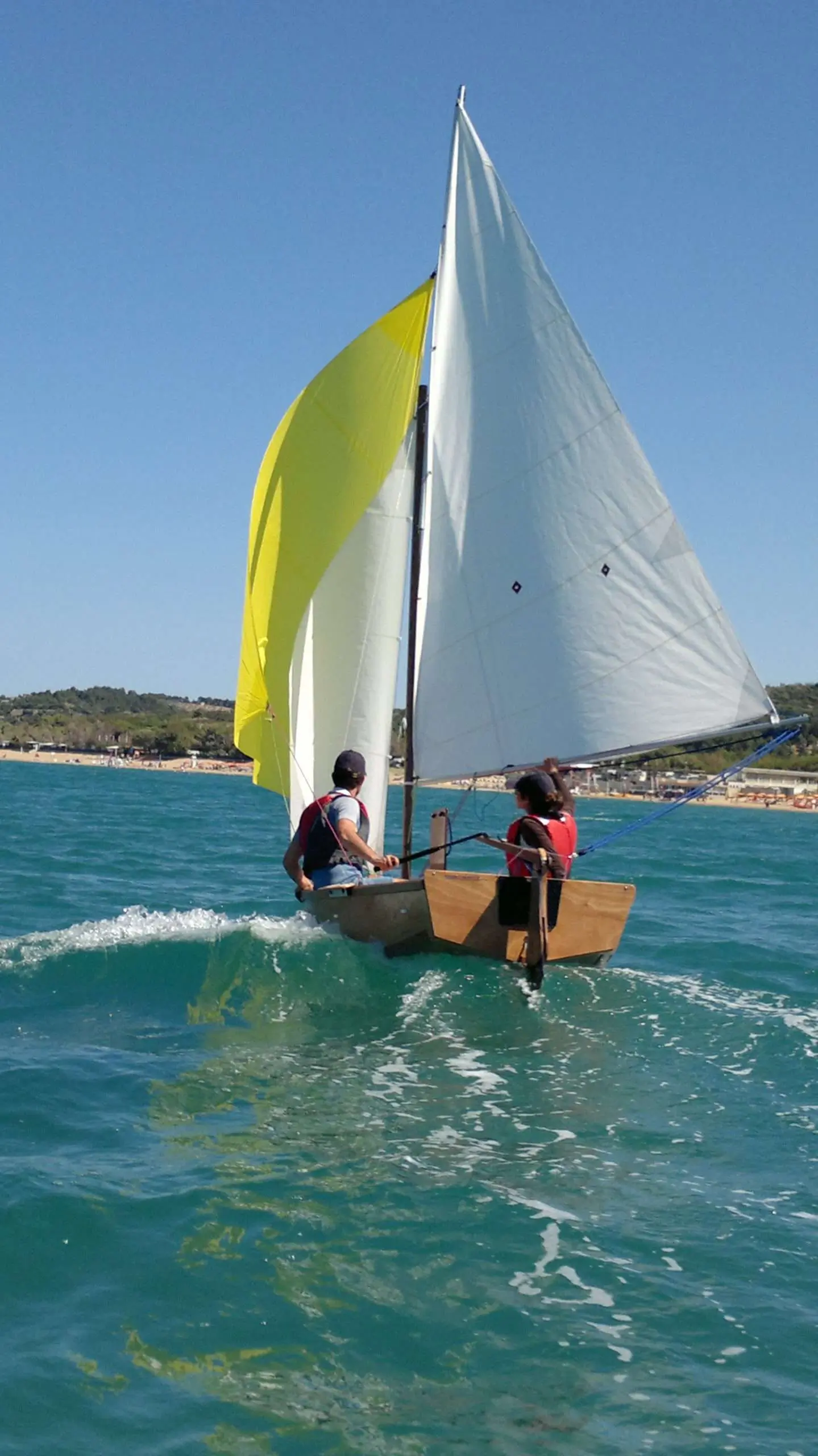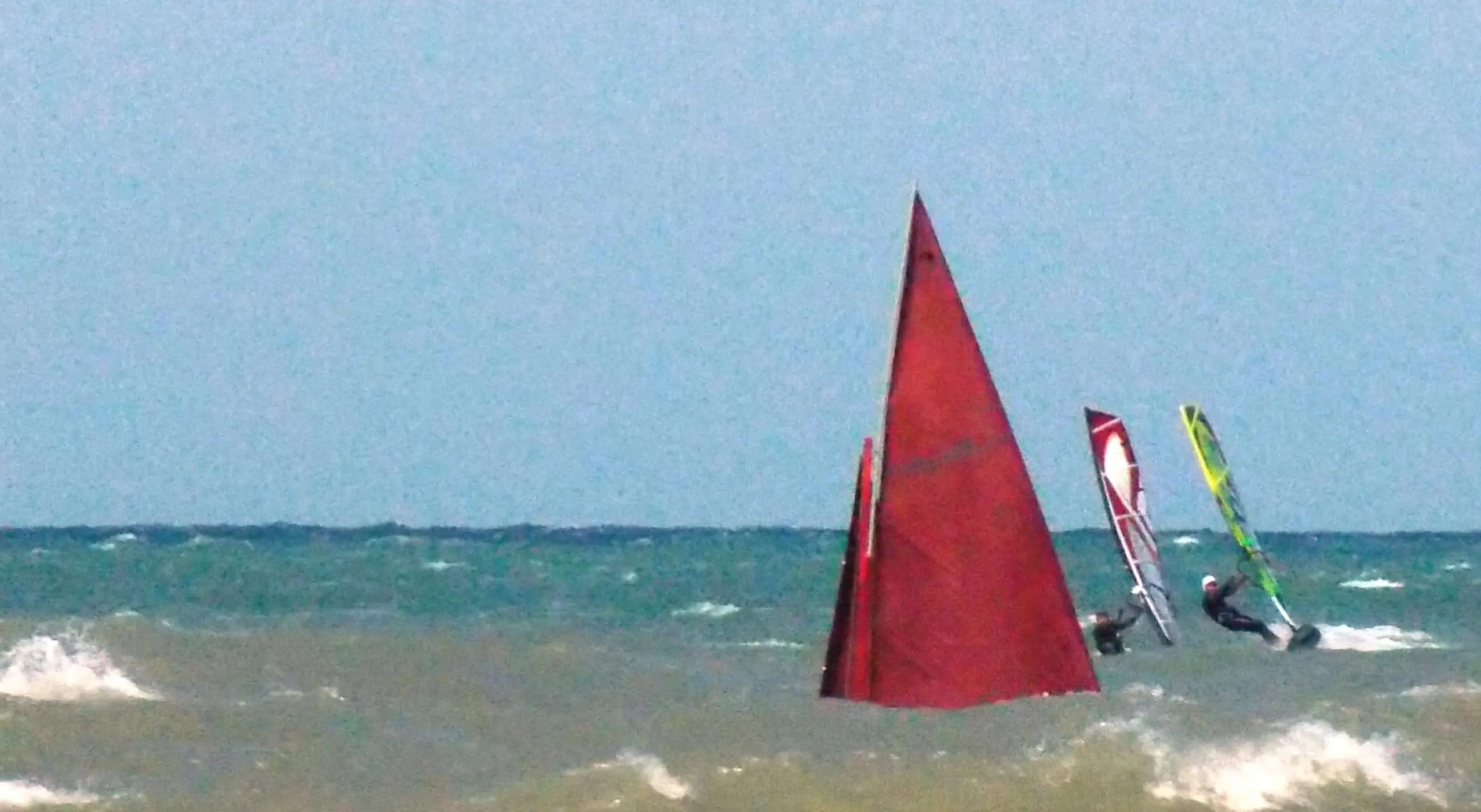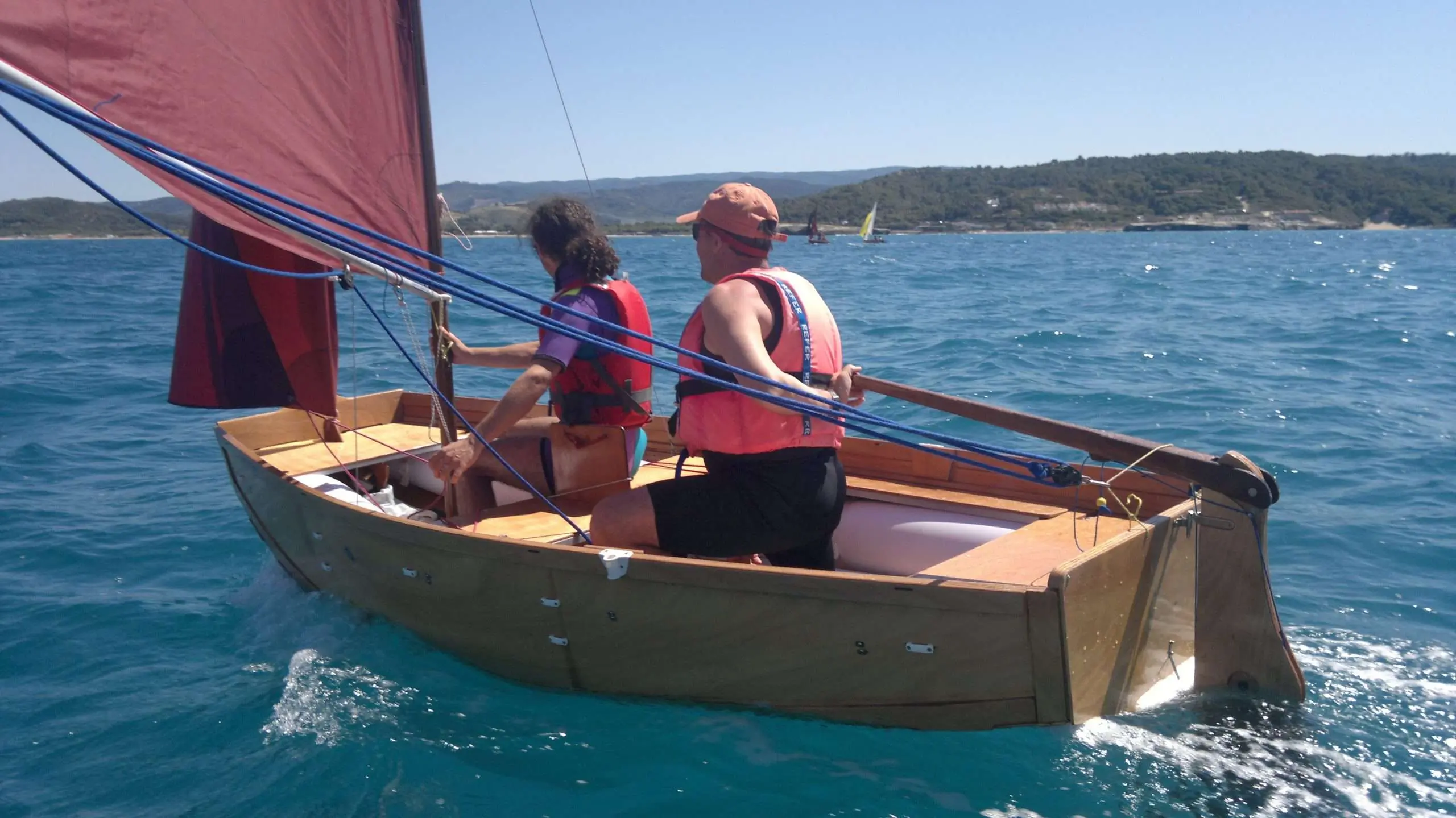Is my boat planing?
Very true… but what exactly does it mean?
It is useless to attribute speed qualities to your boat that disobey the laws of physics. Before entering planing a boat must exceed the critical speed. Then the even more critical phase of semi-planing and only afterwards, if the laws of fluid dynamics are satisfied, planar.
Each hull, based on its waterline length, can calculate its maximum speed in a displacement regime, called critical speed. Let’s see how it’s done. To obtain the result in knots (nautical miles per hour) the waterline length measurement in feet should be used. The formula for calculating critical speed is simple: square root of waterline length multiplied by 1.30. For the p8, where the waterline length is practically equal to its overall length (10 feet), the calculation leads to a critical speed of about 4 knots.
How does planing work? To exceed the speed imposed by the displacement regime, we have to get planing… by releasing the “handbrake”. When planing what basically happens is that the boat no longer plows the water. Instead, the layer of water in contact with the hull sticks to the hull and travels with us. Then the water below slides over this adherent layer of water that has become “solid” with the boat. This greatly reduces friction, because instead of having a hull sliding on the water (a situation that is true up to the critical speed threshold), we have a layer of water sliding on its contiguous layer of water.
In order to glide, however, an initial resistance must be overcome, like a jet that must break through the sound barrier. But enough theory now, let’s jump aboard and… get ready to glide!
Without starting too far, let’s assume that the following 3 fundamental aspects have already been meticulously assimilated:
- correct adjustment of the sails (sails inflated with sheets as stretched as possible);
- longitudinal trim (flat wake, bow and stern mirrors out of the water);
- heeling control (neutral rudder).
So let’s see how best to manage everything to ensure that the boat starts planing as soon as possible and stays there for as long as possible. First you need speed. Therefore, planing close-hauled is very difficult (unless there are special situations, such as good wind and zero waves). Just as it is difficult to plan with a full stern butterfly pace, unless we have something beautiful and powerful chasing us on our wings. It therefore goes without saying that the preferable gaits are abeam and slack, that is when the propulsive force of the sails which develops thanks to pressure + lift at the same time, is mostly converted into useful thrust.
The perfect glide.
So are we ready? Come on, let’s get started… Ideal conditions: we have a NW wind of 14 knots and 1 meter wave. Perfect. We go out and to warm up we start with nice close-hauled edges, in order to always have our departure/arrival base downwind of the “operational area”. A few tacks to gain trim and confidence, also maneuvering in rapid succession to perform good muscle toning exercises.
After scratching the mistral gaining a good windward mile, we can finally get started. Rest up to the beam, letting go of the sheets (ALWAYS resting on the mainsail first). The boat starts with a jerk, accelerates, here comes a beautiful swollen wave abeam… we ride it bearing away, but this time the sheets don’t stretch. Why? Simple: the acceleration has produced a sudden displacement of the apparent wind towards the bow, therefore leaning on the wave, in addition to taking advantage of its generous thrust, we keep the sails correctly trimmed with the new wind angle. In practice we will find ourselves sailing downwind, but with an apparent wind (and regulation of the sheets) coming abeam/large upwind.
The effect is surprising and the boat continues to accelerate riding the wave. At this point, if the planatona is serious, you will probably even have to trim, especially the mainsail, to stay as long as possible in the graceful condition. Even the weight, as the speed increases, will have to move towards the stern. This will prevent the transom from slapping the water and producing considerable friction. Or worse than that when getting off the wave, the boat plunges its nose into the cable, sinking a hundred liters in 1/2 (endless) seconds.
Was it like this? So let’s try again. If we were good at this Volat and everything went smoothly, we stayed planing on the wave for a long time. Sooner or later, however, the wave will have the upper hand and, having freed itself from us, it will resume its journey once again loose and wild. Needless to worry, let’s just let her go and go hunting for our next new darling and prey.
First of all, we will note that the rapid slowdown will have produced the return of the wind behind us, so we urgently need to start producing energy again with our on-board wind farm. Double action: spun sheets and luffing again, towards the beam. Weight forward again, to give lightness to the stern and help her mount the wave, just that new beautiful ciotta that we framed greedy a moment ago…
To remember
Ok go up, down, ski, down, up, come on, go, go…. that’s fine… but let’s remember to check our position often. Since playing while playing we have fallen to the wind, before getting back on the carousel again it is good to go back to pedaling with narrow upwind edges to recover a good control and safety position at 1 mile upwind (compared to our target arrival).
Finally, the latest practical advice on the use of the rudder. When the boat starts planing, in addition to carrying the weight back, release the straps to avoid heeling to leeward and thus compensate for the greater apparent wind pressure. If you keep the boat flat the rudder will remain neutral, requiring only minor adjustments. This is very important because producing firm rudder actions under acceleration is the easiest way to create friction that will abort planing.
In case the wave takes you towards the yaw (involuntary luff), a phenomenon certainly also induced by a sudden and excessive heeling downwind, which can happen if we have not managed to keep the boat flat when surprised by a slightly fatter wave , instead of using the rudder as a club (risk of doing damage) you have to operate it only to limit the phenomenon. Rather react to bring the boat flat as soon as possible and magically you will see, after just a moment, that the boat will return to its course by itself. If this happens often because the waves are pretty big, remember that the rigged jib, downwind of the mainsail, helps a lot.



